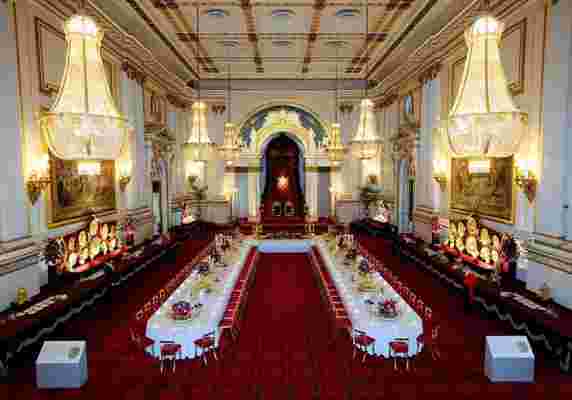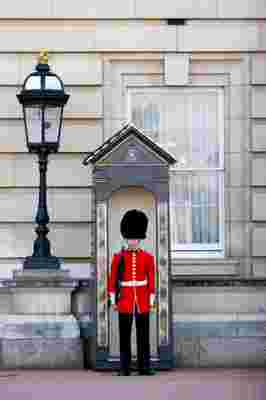6 Things You Never Knew About Buckingham Palace
As far as architectural marvels are concerned, Buckingham Palace is among the top of list. Considering its 775 rooms, 78 baths, 1,514 doors, and 40,000-plus lightbulbs, the structure exudes opulence. And unlike many European castles, this regal dwelling is very much a living, breathing being. Buckingham Palace is so popular that even the guards who stand at their gate have their own emoji.
Of course, like all old buildings, Buckingham Palace carries stories in its every brick, beam, and baluster. Below are but a few of its better-kept secrets.
A River Runs Through It:
Rather, beneath it. In its street-level heyday, the River Tyburn was a salmon-packed fisherman’s dream. Today the underground channel winds from Marlyebone to Vauxhall Bridge, trickling beneath Buckingham Palace on its way. In recent years, the Tyburn Angling Society, a centuries-old organization of fishing fanatics, has rallied to bring the waterway back aboveground. That would mean demolishing several structures along the way—including Buckingham Palace.
Animal Kingdom:
Camels, elephants, crocodiles, and all manner of winged beings have called the palace grounds home. Deer roamed wild during the days of King Henry VIII (1491–1547), who used the plot for hunting (until he grew too heavy for his horse). Years later King James (1566–1625) brought a veritable zoo to the yard, which ensuing royals gladly mimicked. Queen Charlotte (1744–1818) was gifted eight elephants and a zebra, while Queen Victoria (1819–1901) delighted in riding P. T. Barnum’s famous elephant, Jumbo, around the gardens.

The ballroom in Buckingham Palace.
A Design to Die For:
In the early 1700s, John Sheffield, the Duke of Buckingham, commissioned architect William Winde to build Buckingham House—the beginnings of what the palace looks like today. Yet there was one major problem: The duke was notorious for not paying his debts. Sheffield’s shifty financial habits nearly cost him his life, when Winde, desperate to collect overdue paychecks, brought the duke up to the roof of Buckingham House. It was there the architect threatened to shove him off unless he paid immediately. Unsurprisingly, it worked.
A Steep Price to Pay:
In 1761, King George III (1738–1820) acquired Buckingham House as a pied-à-terre for his wife, Queen Charlotte. But it wasn’t until the ascent of their son, King George IV (1762–1830), that Buckingham Palace began to morph into magnificence. Maybe, in fact, a bit too much so. King George IV had an eye for fabulous decor. Thus, when he decided to move into Buckingham House full-time, he tapped John Nash, neoclassical architect extraordinaire, to supersize the compound with a spectacular face-lift. Parliament agreed to foot £150,000 of the bill—but by King George IV’s death in 1830, costs had spiraled out to nearly half a million (close to $1 billion in modern terms).

The Queens Guard, who wear their famous red and black uniforms, have become iconic images.
Sniff Test:
When 18-year-old Queen Victoria inherited the throne in 1837, she discovered a palace that was in serious need of repair. For starters, the palace’s kitchens kept flooding with sewage. Gas from lamps built up dangerously on lower floors. Poor ventilation kept the palace very cold. Fortunately, Queen Victoria’s husband, Prince Albert (1819–1861), had a team tackle those design flaws. (The couple also oversaw several major additions by architect Edward Blore, including the now-iconic balcony.)
What Lies Beneath:
Once, when Queen Elizabeth the Queen Mother and her husband, King George VI, were meandering through the lower levels of the castle, they came across a total stranger. Seemingly, he had been living there for a while. He purported to be “a friend of a friend.”